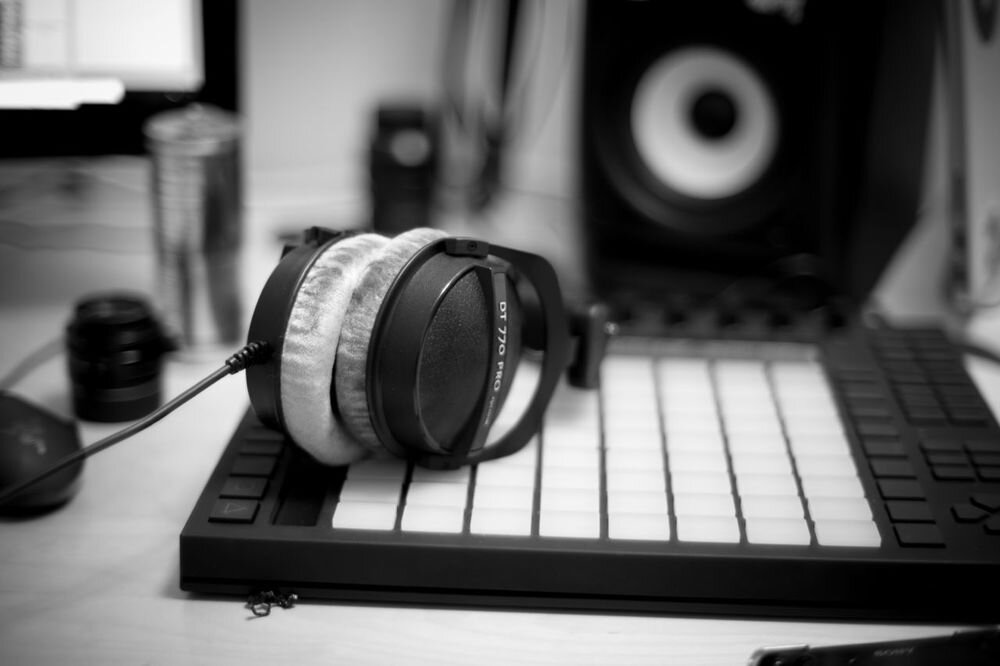Understanding Ableton Push

Since I was a young child, I’ve loved music. I became a percussionist early on and dedicated over a decade of my life to my beloved drum kit. Today, I own a growing number of synths and keyboards, but my musical mind continues to gravitate around the concepts of rhythm and geometry. I find myself constrained and occasionally frustrated by the layout of a standard keyboard.
I eventually explored the Chapman Stick and its novel Matched Reciprocal Tuning. This tuning allows you to discover music geometrically. Play the same shape with both hands and the chords will be inverse of one another. From there, you can explore by simply moving up, down, left, right, diagonally, etc. It’s incredible.
Thus began my search for something similar to the Stick that allowed me to explore my synthesizers in a similar fashion. The perfect controller.
It took a while, but I finally found the new Ableton Push.
What is Push?
Ableton Push is a new control surface and instrument from Ableton, in collaboration with AKAI. It serves a few purposes:
- A session/scene trigger, much like the popular Novation Launchpad. - A musical scratchpad, powered by Ableton Live. You can sit down with a Push and create a new song, start to finish, without looking at your computer once. - A new musical instrument that changes everything. Let’s focus on that last part.
Sacred Geometry Ableton Push has a new ‘scales’ mode that allows you to specify which scale/key you are currently working in. Once selected, depressing any of the Push’s 64 illuminated pads in the grid will play a note that is perfectly in key.
Within mere hours of unboxing, I was able to play a simple melody for piano in a harmonic minor scale. This would have been challenging for me on a standard keyboard.
You can ascend a scale two ways:
- Play each of the eight pads in a row, from left to right. - Play three pads, then move up a row and repeat.
Because of this layout, each note is represented on the grid multiple times. Each of the scale’s tonic notes are illuminated in blue. When you press a pad, the other instance of that note will be illuminated in green. This makes it extremely simple to switch fingerings when you find yourself running out of grid.
Using the three-pad method is truly incredible. I can select a key/scale and proceed to jam for the hours. I can finally play the deep, emotional music that’s been in my head, struggling to get out all of these years.
To play a major triad in any scale, you simply press make a triangle shape on the pads. This pattern works for any scale and any key. Change the key — rinse, repeat.
It allows you to discover music geometrically. And that changes everything.
How To Order a Push
Ableton has unfortunately been having some difficulty meeting the tremendous demand for this instrument. It is currently sold out everywhere and there’s a 16+ week production wait if you order one from Ableton.
So, you have a few options:
- Pay $1,000+ to some guy trying to make a quick buck on eBay. Not recommended. - You preorder one from Amazon and play the waiting game. - You get creative. I found mine in an obscure music shop in Toronto by doing a Twitter search for “ableton push stock”. The shop, which only has 200 followers, had tweeted a few days before that they had a few available.
The Deep Dive
I get quite anxious while awaiting the arrival of a new toy. Every time I order something exciting, it becomes nearly impossible for me to get it off my mind — I read nearly every review and video available on the internet.
So, here are some nice links I found while doing my obsessive research into the Push:
- Hands-on Review of the Ableton Push - What Does it Mean to Be an Electronic Instrument? - Playing Notes and Chords with Push
Order one. Order one now.

